Soup Up Your Dust Collector
Get finer filtration and more power from any single-stage collector.
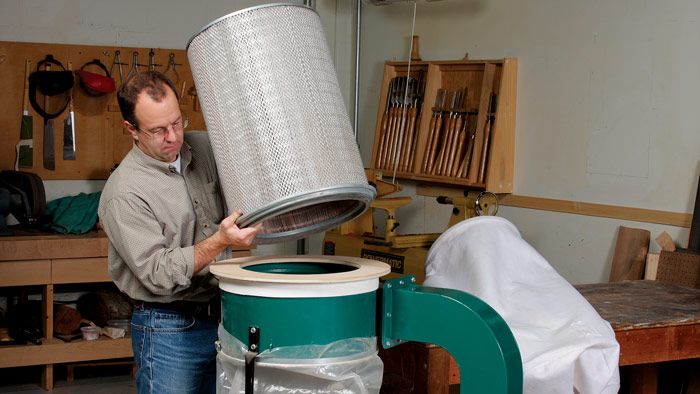
Synopsis: Everyone agrees that wood dust is a danger, but not everyone can afford the best solution, a cyclone dust collector with state-of-the-art filtration. So what do you do for more budget-friendly protection? Add a better filter and a separator or internal baffle to your single-stage collector. Better filters will filter the finest dust, keeping your airways cleaner, and a separator or baffle will trap the majority of dust before it reaches the filter, so you won’t have to stop and unclog it as often.
The dangers of wood dust have been well-chronicled in this magazine. Most people now realize that it is the tiniest, hardest-to-capture particles that are the worst, lodging deepest in the lungs and staying there the longest.
Everyone agrees on the problem, but a lot of people can’t afford the best solution: a cyclone dust collector, with state-of-the-art filtration, hooked up permanently to every dust and chip producer in the shop. A good-sized stationary cyclone costs upwards of $1,000, and you’ll spend a lot more for the ducting and blast gates required to put the suction everywhere you need it. Of course, you can save money by buying a smaller, portable cyclone and connecting it to one or two tools at a time, but you’ll still be in for a grand or more.
The good news is that there are ways to boost the performance of a less-expensive single-stage dust collector, whether you own one already or are starting from scratch. The key is conquering the shortcomings of these portable machines: subpar filters that clog quickly.
The trouble with single-stage collectors
As we pointed out last year in “A Revolution in Dust Collection” (FWW #223), even the best single-stage dust collectors come with compromised filters that won’t grab the smallest particles, those under 1 or 2 microns in size. Fortunately, three companies, Grizzly, Oneida, and Wynn Environmental, now sell much better aftermarket pleated filters that grab the most dangerous dust particles. But a better filter alone isn’t enough.
The trouble—and the reason manufacturers don’t put better filters on their single-stage collectors in the first place—is that this type of collector doesn’t have a separation stage that catches most of the dust before it reaches the filter, like a cyclone does. That means that all of the dust and chips reach the lower bag of the dust collector, and though we can’t see exactly what happens, the following is our best guess based on our testing numbers.
When the lower bag gets to about half full, the vortex, or swirl, begins to pull dust up into the filter area, clogging it and killing airflow. Of course, when the flow slows, too much dust escapes at the source, and you are back to square one: a faceful of the fine stuff.
Two good solutions
It’s easy to add a separator to a single-stage collector. Last year we illustrated the benefits and showed you which ones work best. The Best Value option was a simple lid by Woodcraft that leads your dust hose to and from a trash can. The Best Overall was Oneida’s full-on cyclone-style separator, the Super Dust Deputy, which is pricier but works amazingly well.
However, another solution has been kicking around the Web for some time: a simple shop-made disk that goes inside your single-stage collector, keeping the dust vortex from rising into the filter area. This gizmo was conceived by J. Phil Thien a few years back and is pretty well described on his website (jpthien.com). Recently, Jet started building a similar baffle into its Vortex line of single-stage collectors.
We decided to pair up all three separator options with the new aftermarket filters to see which setup is the best, most cost-effective way to collect dust with a single-stage machine. We wanted to know which combination keeps airflow the strongest and the longest before the filter requires cleaning.
So once again our indefatigable shop manager, Bill Peck, dragged our test equipment out of storage, lined up a typical 1-1⁄2-hp single-stage collector, brought in dozens of more bags of wood dust from a local millwork shop, and started pouring it into the hose and taking readings. Take a close look at the charts and conclusions, and you’ll learn how to get the cleanest air for the least money.
The bottom line
All three of our aftermarket filters are third-party certified to be MERV 15 or higher (meaning they collect 85% or more of particles 0.3–0.5 microns in size). We are not equipped to test filtration, so we took their word for it. What we were able to evaluate was how much additional airflow they steal, how quickly they clog, and how easily they attach to various dust collectors.
The initial airflow didn’t turn out to be a big deal. None steal more than 5%. And when we teamed all of these filters with the Super Dust Deputy, they stayed clean indefinitely. The Thien baffle lets a bit more dust through, however, and that’s where we saw a difference in filter performance.
The Wynn was the slowest to clog and dampen the flow. On the other hand, the Wynn requires the most work to fit most dust collectors. The Oneida filter comes with an adapter kit that works with many collectors, and Grizzly’s aftermarket filter drops right onto Grizzly dust collectors.
Also, you can always unclog any filter and restore the airflow with compressed air, blowing from the outside in. But there is a hiccup here with the Thien device. When you blow out the filter, some of the fine dust drops onto the baffle, where it is simply sucked back into the filter when you turn the collector back on. So if you go with this shop-made solution, we recommend blowing out the filter about every third time you empty the lower bag, and taking off the filter each time so you can brush the dust off the baffle into the lower bag.
And finally, to collect dust efficiently from the biggest chip-producers in your shop, you need airflow of at least 400 cfm, and preferably 500. With our 1-1⁄2-hp collector and our best filter/separator combos, we were able to keep flow levels in this critical zone, but only just. So we do not recommend these upgrades on dust collectors below 1-1⁄2 hp, but we recommend them highly for dust collectors above that power level.
Add a fine filter and a separator or an internal baffle
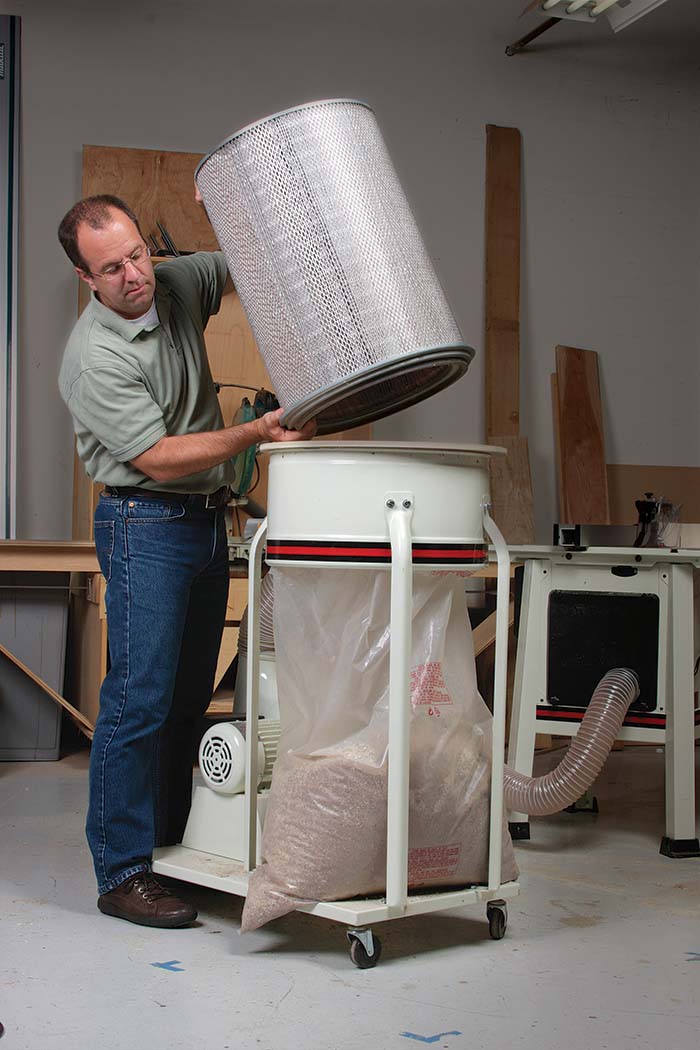
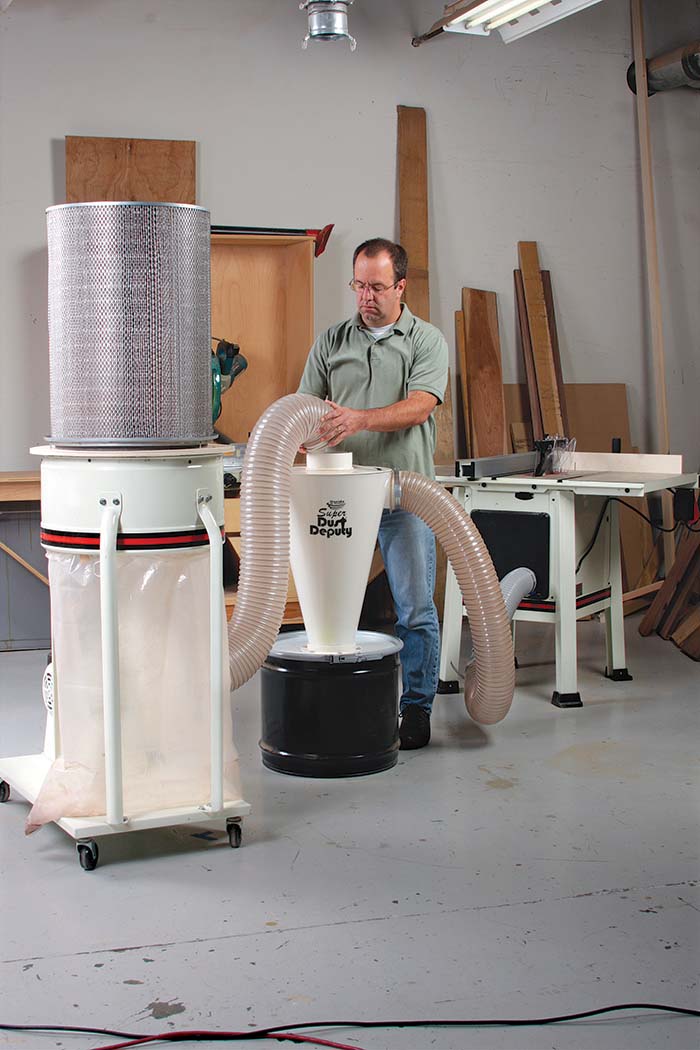
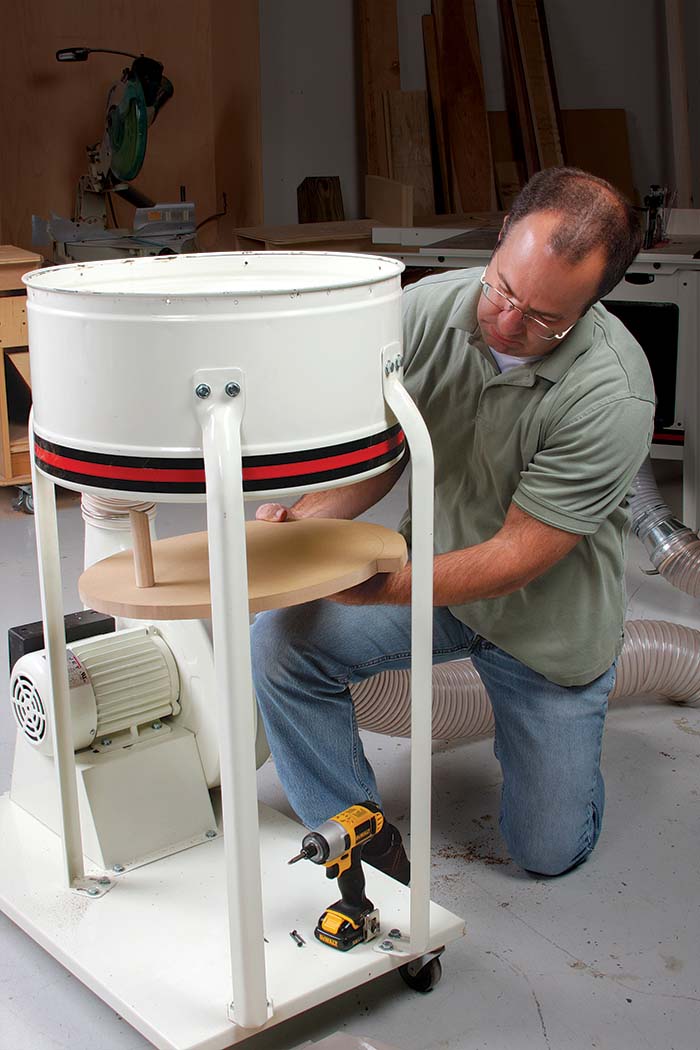
Finer filters clog quickly

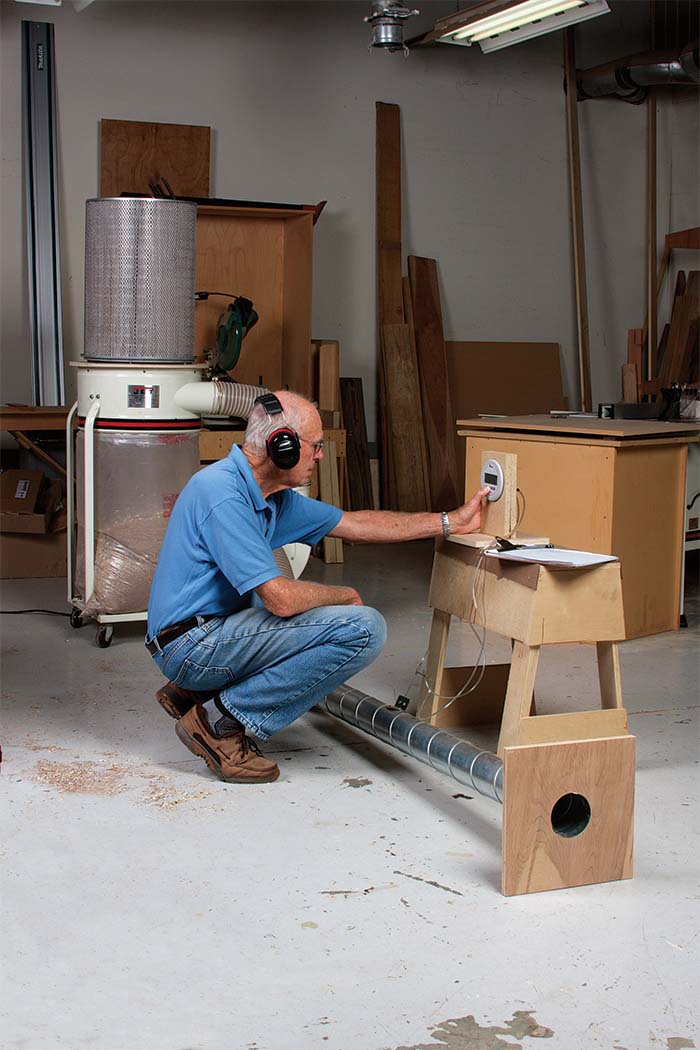

Separator is a good solution

Two choices
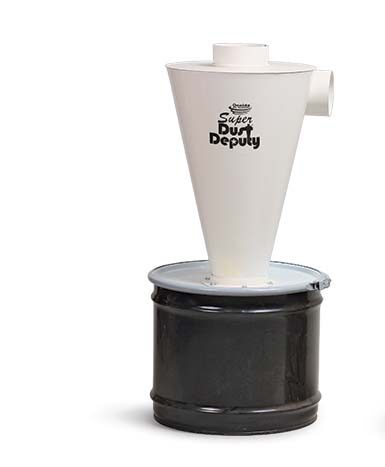 |
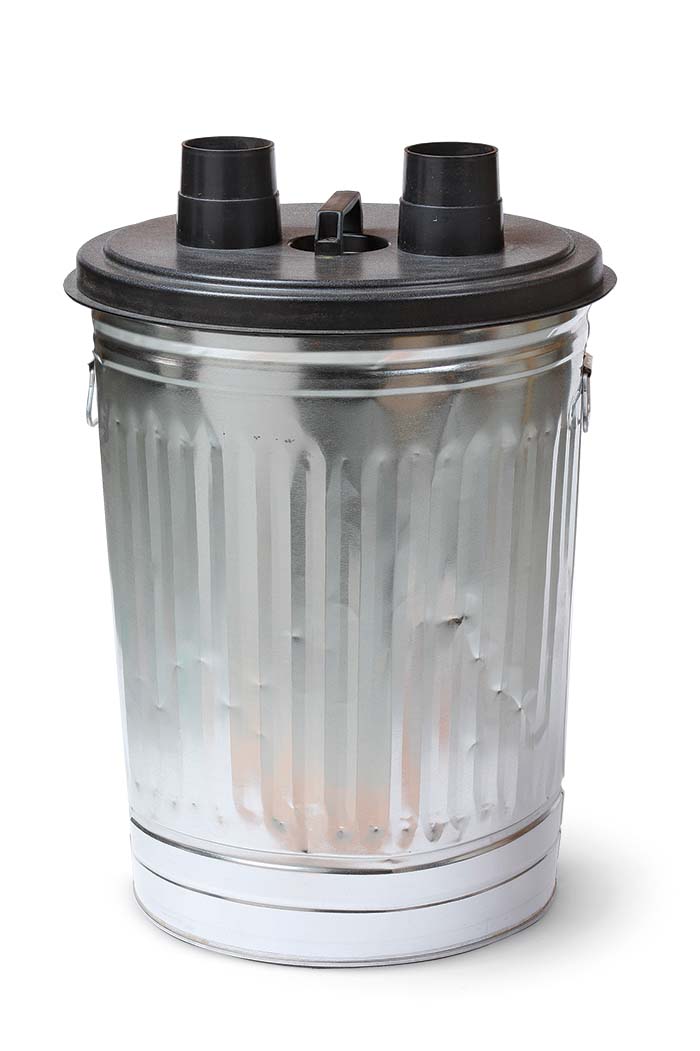 |
Thien baffle is a shopmade option

J. Phil Thien’s internal baffle, described on his website (jpthien.com), was easy to install on our Jet DC1100 1-1⁄2-hp single-stage collector, which is similar to many others. To make it, you cut a circle to fit in the central metal drum of your collector, mark a second circle on it with a smaller radius, and then cut away part of the perimeter. You mount it just below the flow inlet.
 |
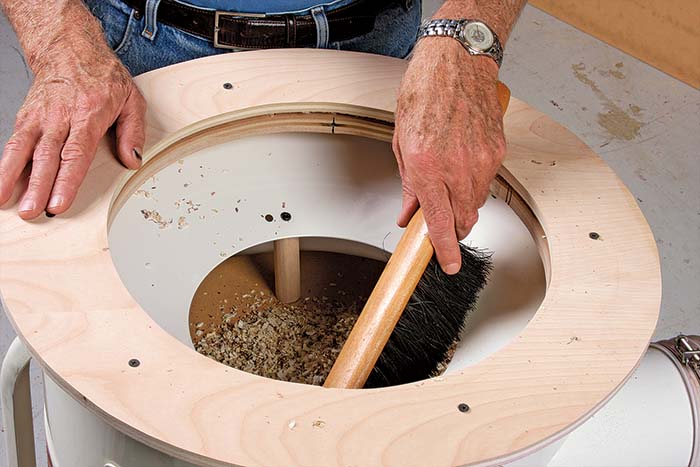 |
Filter face-off
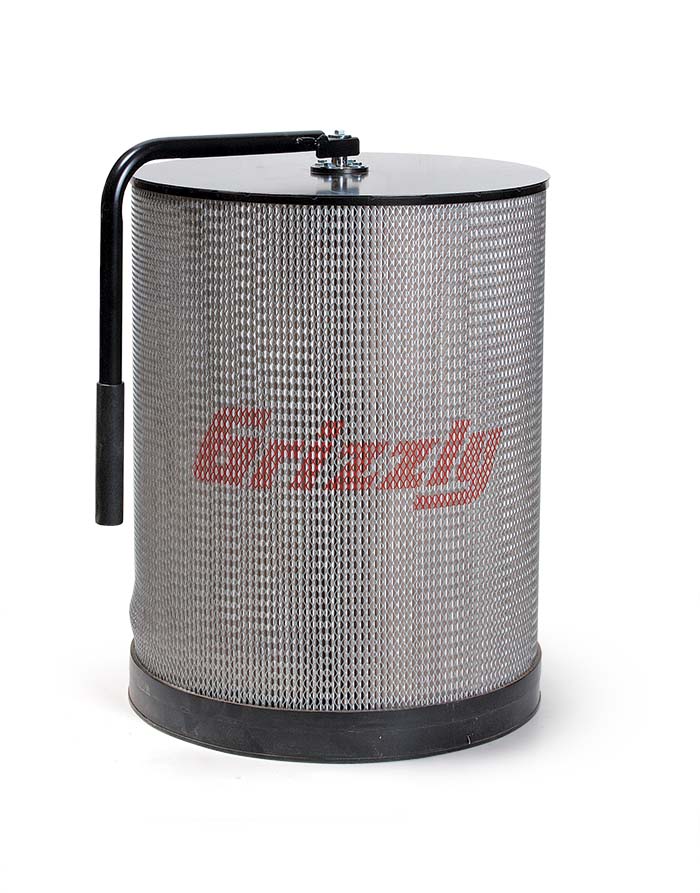
Grizzly T23916 Cartridge Filter $300 Grizzly.com |
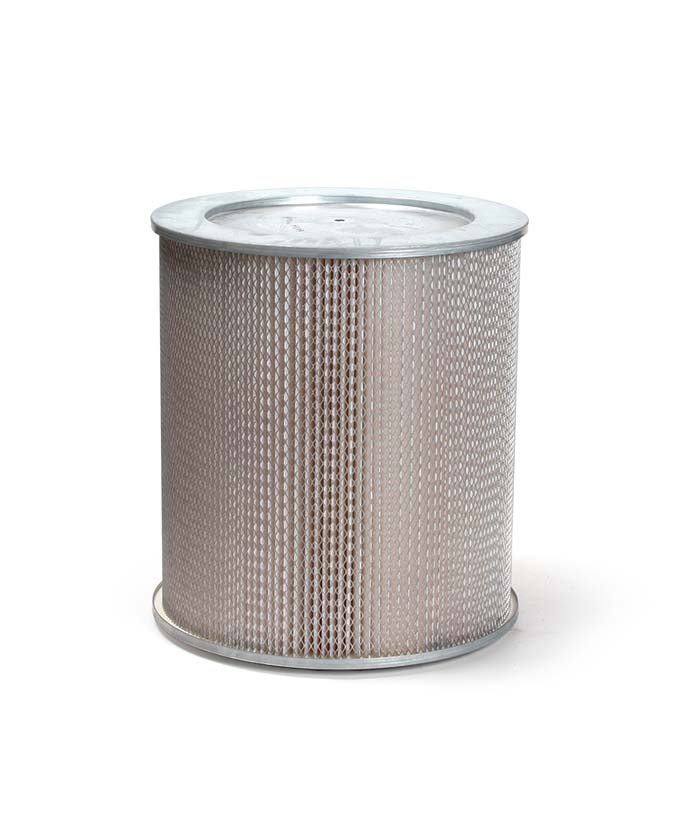
Oneida HEPA Media Filter Conversion Kit $268 Oneida-Air.com |
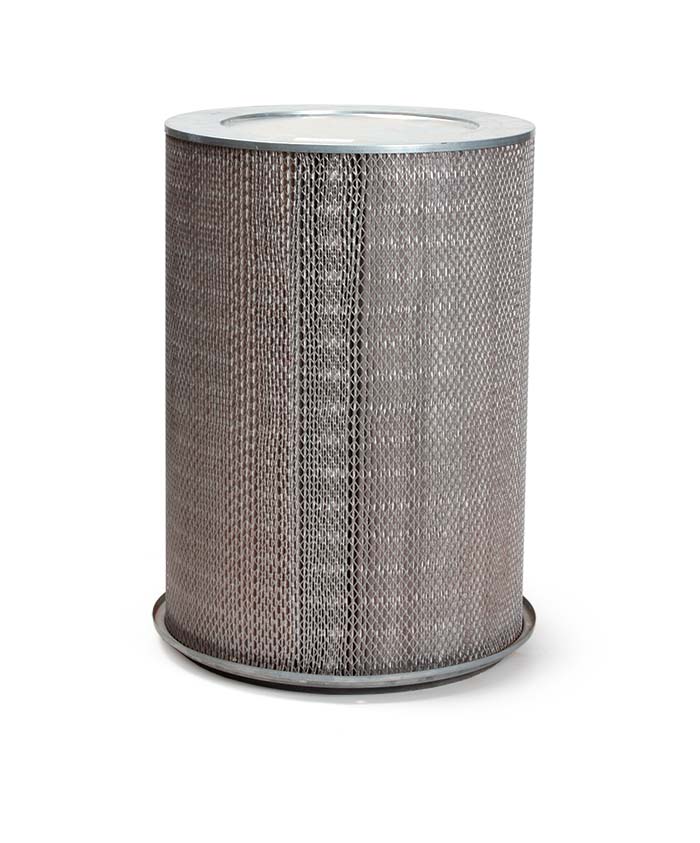
Wynn C-1425C $165 Wynnenv.com |
There are three aftermarket filters that will catch the finest particles, each one a big improvement over the stock filters on today’s single-stage dust collectors.

Wynn requires some DIY
There are a number of ways to attach the narrow Wynn filter to various dust collectors. The method that works on any model, and makes the filter easiest to take off and put back on when needed, is two shop-made plywood rings.
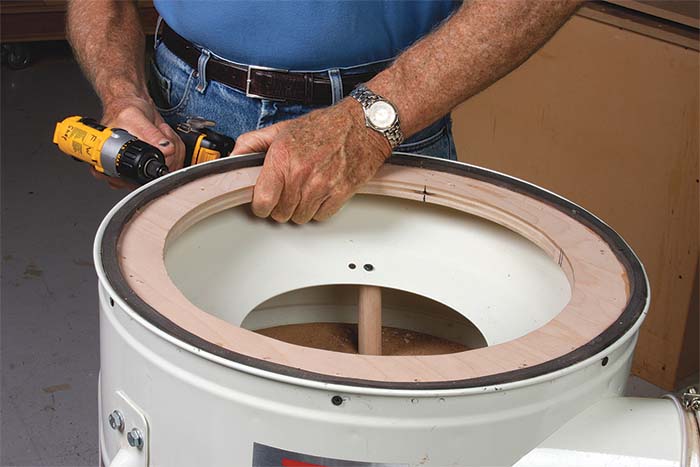 |
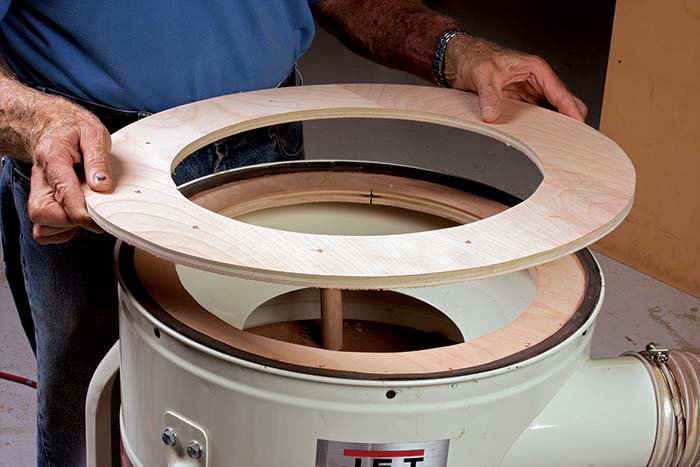 |
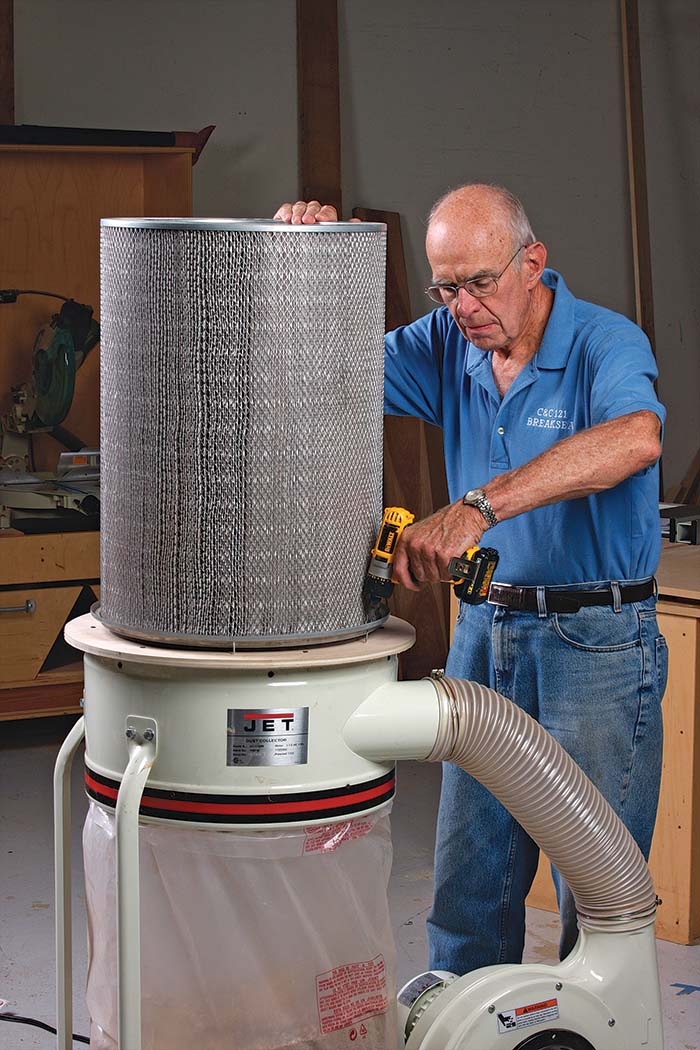
Upgrading your collector
If you already own a single-stage collector, here are two great ways to improve its filtration and flow.
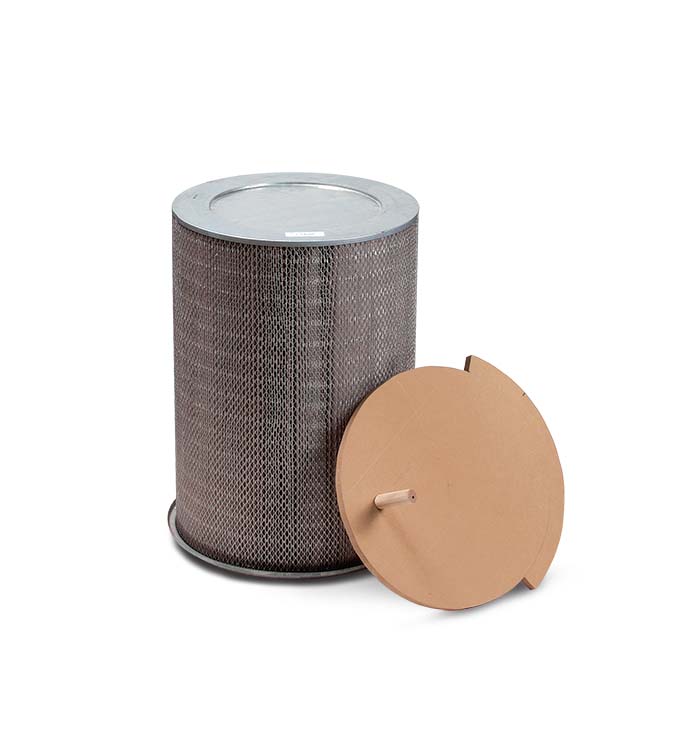 |
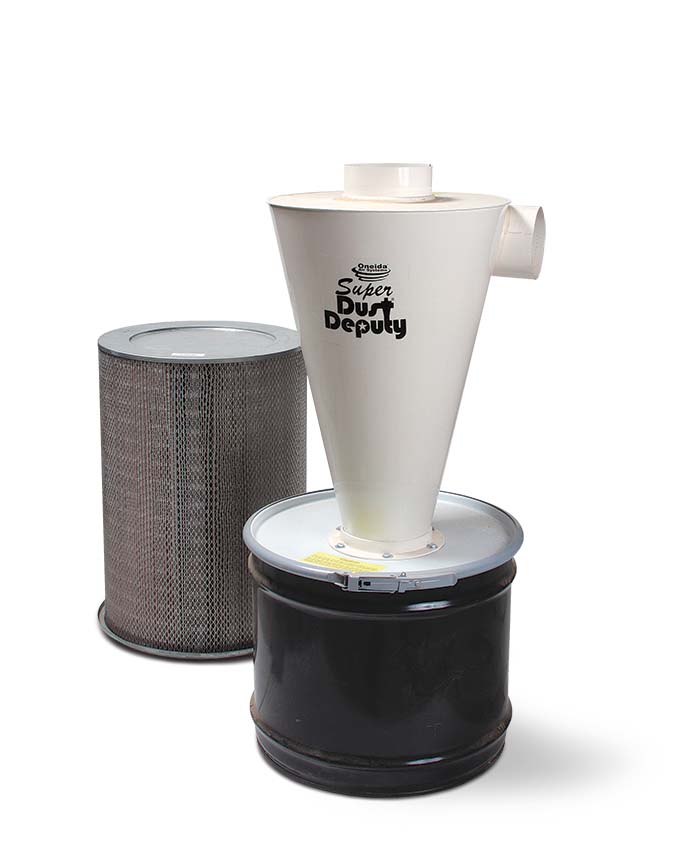 |
Starting from scratch?
If you don’t already own a dust collector, and you don’t have the budget for a cyclone, buy the most powerful single-stage collector you can afford, with the most basic filter. Grizzly’s 2-hp G1029Z2 is only $275 at Grizzly.com. Then pick one of the upgrade combos mentioned above.
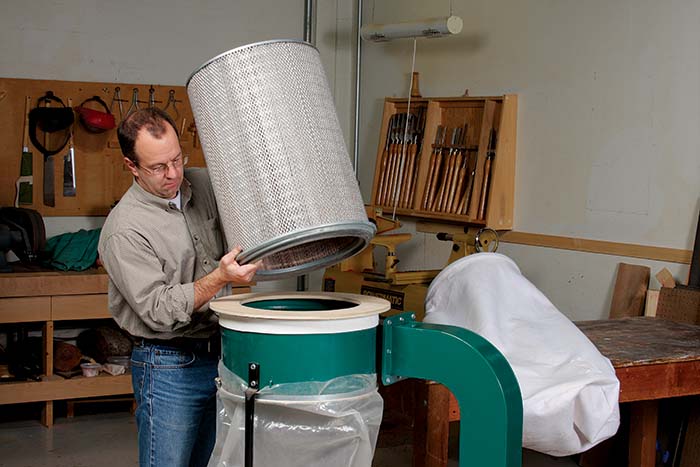
For the full article, download the PDF below.
Fine Woodworking Recommended Products
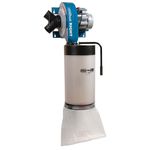
Rockler Dust Right 1250 CFM

Hedgehog featherboards
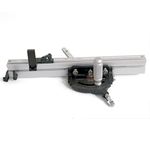
JessEm Mite-R Excel II Miter Gauge








Log in or create an account to post a comment.
Sign up Log in